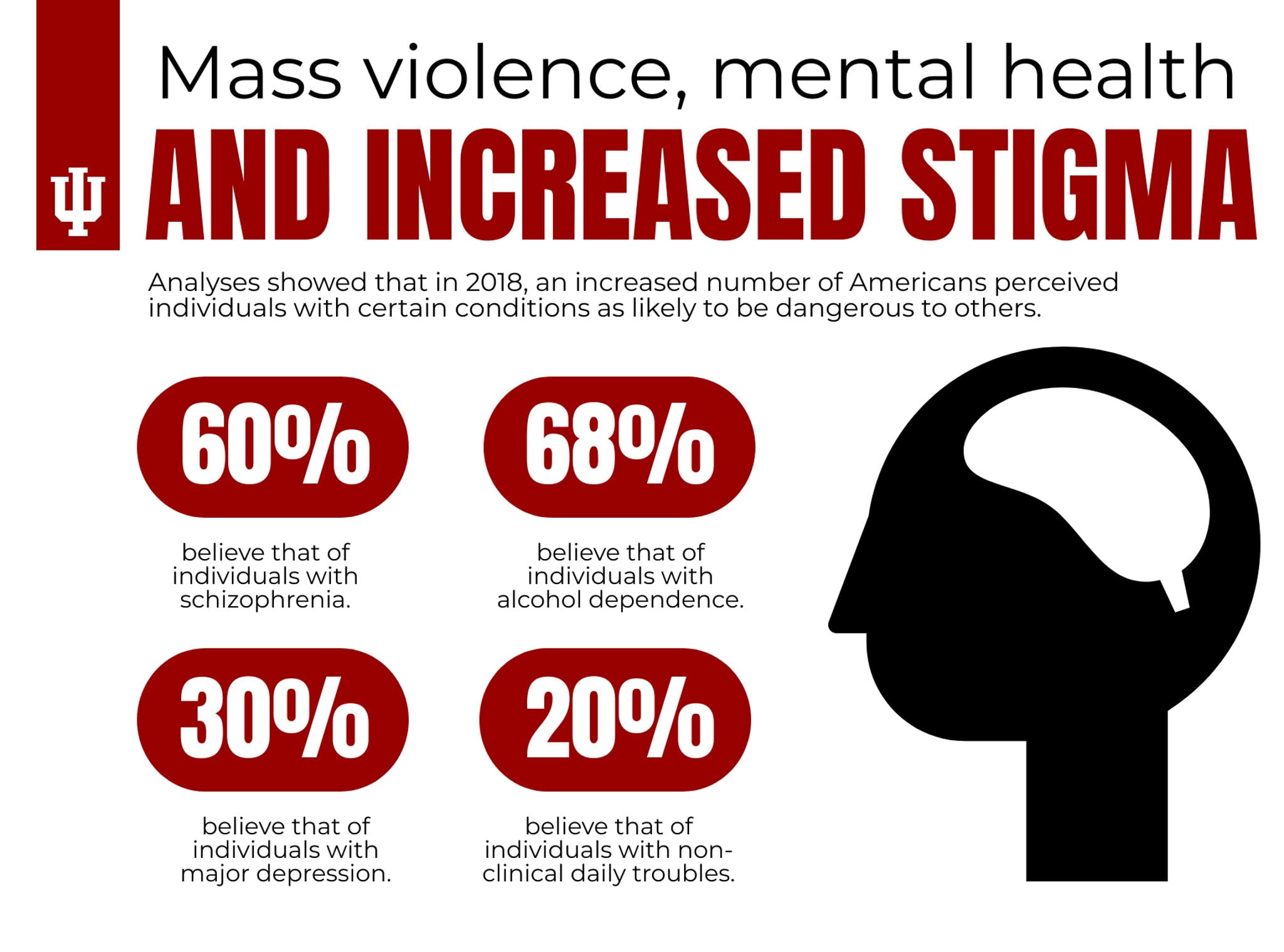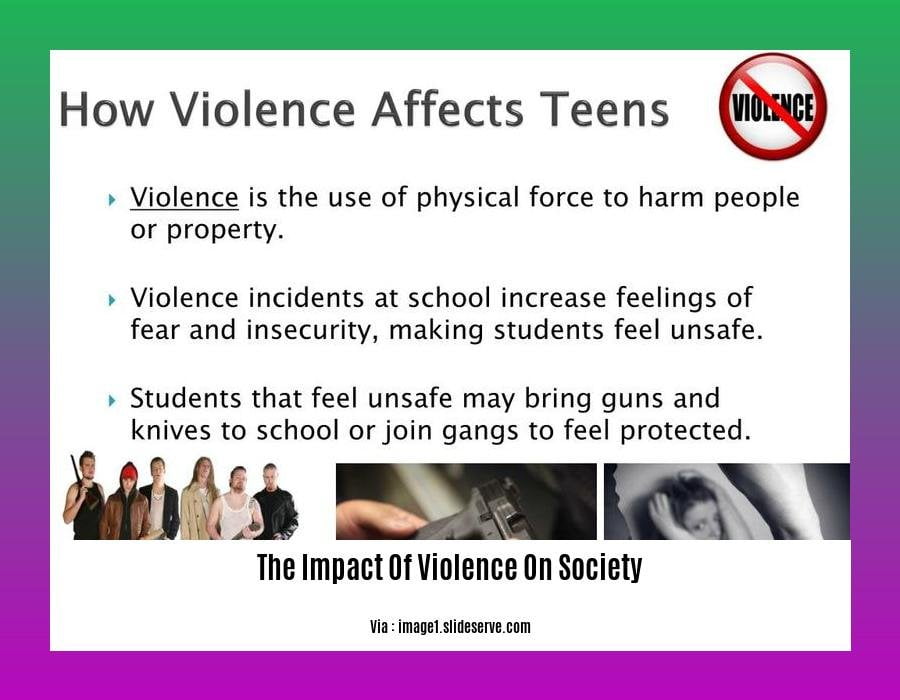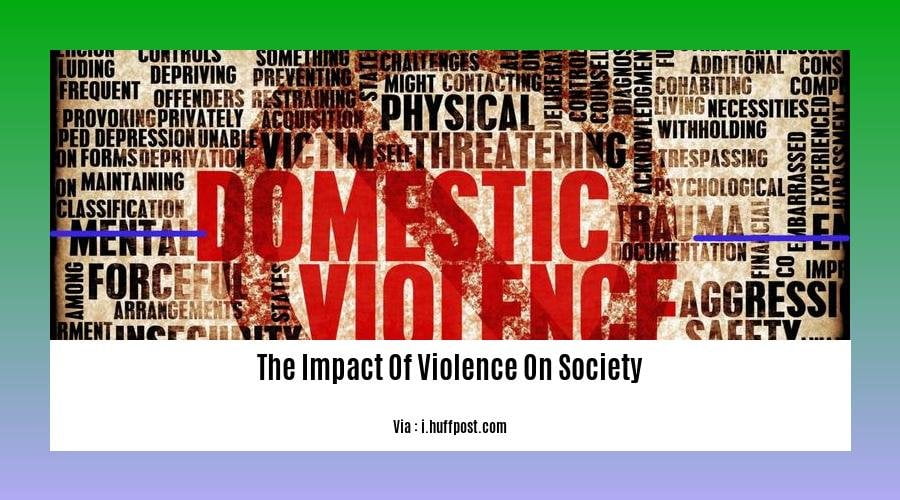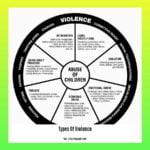Delve into “The Impact of Violence on Society: A Comprehensive Analysis” and unravel the intricate tapestry of violence’s repercussions. With an experienced eye, we’ll explore its profound effects on individuals and communities, dissecting the psychological, social, and economic scars it leaves behind. Through meticulous research and in-depth analysis, we’ll shed light on the complex web of causes and consequences that perpetuate violence, empowering us with insights to forge a path towards safer, more just societies.
Key Takeaways:
- Violence has widespread and severe consequences on individuals, families, and society as a whole.
- Short-term and long-term effects include mental, physical, and spiritual harm.
- Violence perpetuates cycles of violence and reinforces harmful beliefs within communities.
- Its effects extend beyond direct victims to include witnesses, family members, and service providers.
- Violent victimization is a significant societal issue with lasting negative consequences.
The Impact of Violence on Society

Violence is a pervasive issue that has far-reaching consequences for individuals and communities alike. Its effects are not limited to physical harm but also extend to mental, emotional, and social well-being.
Short-term and Long-term Effects of Violence
Violence can inflict both immediate and long-lasting harm. Physical injuries, psychological trauma, and emotional distress are common short-term effects. Long-term consequences may include chronic health issues, substance abuse, and difficulties in forming and maintaining healthy relationships.
Impact on Individuals
The impact of violence on individuals is devastating. Victims of violence may suffer from physical and psychological scars that can last a lifetime. They may experience fear, anxiety, depression, and post-traumatic stress disorder (PTSD). Violence can also result in economic hardship, loss of social connections, and a diminished sense of security.
Impact on Communities
Violence has a ripple effect that extends beyond individual victims. It perpetuates cycles of violence, reinforces harmful beliefs and stereotypes, and erodes trust within communities. It can also lead to economic decline, social disorganization, and a lack of safety for all residents.
Addressing Violence in Society
Addressing the impact of violence on society requires a comprehensive approach that involves prevention, intervention, and support.
1. Prevention:
- Implement educational programs that promote non-violence, conflict resolution, and healthy relationships.
- Address the root causes of violence, such as poverty, inequality, and access to firearms.
- Create safe and supportive environments in schools, workplaces, and communities.
2. Intervention:
- Provide immediate assistance to victims of violence, including medical care, mental health support, and legal aid.
- Implement strategies to interrupt cycles of violence, such as victim assistance programs and community outreach initiatives.
- Address the needs of perpetrators to break the cycle of violence.
3. Support:
- Offer long-term support to victims of violence, including counseling, psychotherapy, and support groups.
- Provide resources and training for professionals who work with victims of violence.
- Advocate for policies that support victims and prevent violence.
By working together, we can create a society where violence is less prevalent and its impact is minimized. Together, we can build a world where individuals and communities can live free from fear, harm, and violence.
Are you familiar with the history of violence? Learn about different types of violence and causes of violence.
Psychological Impacts of Violence
Violence has a devastating impact on our minds and hearts. It can leave lasting scars, both visible and invisible. The psychological impacts of violence are complex and far-reaching, affecting individuals, families, communities, and societies as a whole.
Trauma and Stress: Violence can trigger severe psychological trauma, leading to symptoms such as anxiety, depression, PTSD, and substance abuse. Victims may experience flashbacks, nightmares, avoidance behaviors, and difficulty sleeping.
Emotional Distress: Violence often evokes intense emotions, including fear, anger, guilt, and shame. These emotions can overwhelm the mind, impairing thinking and decision-making abilities.
Cognitive Impairment: Violence can also affect cognitive functioning. Victims may experience difficulty concentrating, making decisions, and remembering information. This can interfere with daily life, including work, school, and relationships.
Stigma and Discrimination: Victims of violence often face stigma and discrimination. They may be blamed for their experiences, labeled as weak or unworthy, and excluded from social circles. This can further compound their psychological distress.
Key Takeaways:
- Violence has significant and long-lasting psychological consequences.
- The psychological impacts of violence include trauma, stress, emotional distress, cognitive impairment, and stigma.
- It is crucial to provide support and resources to victims of violence to address these impacts and promote healing.
Citation:
* National Crime Victims Research and Treatment Center
Preventing and Mitigating Violence

Violence is a pervasive issue that plagues societies worldwide, leaving devastating impacts on individuals, families, and communities. Its consequences extend far beyond physical harm, reaching into the psychological, social, and economic spheres. Understanding the root causes of violence and implementing effective strategies to prevent and mitigate its effects is crucial for fostering safer and more harmonious societies.
Key Takeaways:
- Violence has severe physical, mental, and emotional consequences, including injuries, trauma, and distress.
- It perpetuates cycles of violence, eroding trust and undermining community cohesion.
- Preventing violence involves promoting non-violence, conflict resolution, and safe environments.
- Intervention strategies provide immediate assistance to victims, interrupt cycles of violence, and connect individuals to support services.
- Addressing violence requires collaboration between individuals, communities, and policymakers to create a comprehensive and sustainable approach.
Steps to Prevent and Mitigate Violence
1. Promote Non-Violent Values and Behaviors
– Encourage empathy, compassion, and understanding through education and community initiatives.
– Implement anti-bullying programs in schools and workplaces.
– Advocate for peaceful conflict resolution techniques and provide training in anger management.
2. Create Safe and Supportive Environments
– Invest in community development programs that address underlying social and economic factors contributing to violence.
– Ensure access to affordable housing, healthcare, and education opportunities.
– Improve lighting, security, and surveillance in public spaces to deter crime.
3. Strengthen Community Partnerships
– Foster collaboration between law enforcement, community organizations, and individuals to address violence concerns.
– Establish neighborhood watch programs and community policing initiatives to increase trust and build relationships.
– Support victim advocacy groups that provide assistance, counseling, and legal representation to survivors of violence.
Conclusion
Preventing and mitigating violence requires a multifaceted approach that engages all sectors of society. By promoting non-violence, creating safe environments, strengthening community partnerships, and supporting victims, we can work towards reducing the incidence of violence and fostering a culture of peace and respect.
Citation:
Preventing Violence and Reducing its Impact – World Health Organization
Building Resilient Communities
Violence is a global issue impacting individuals, families, and societies. It can take various forms, including physical, psychological, and emotional abuse. While the consequences of violence are far-reaching, building resilient communities is crucial for mitigating its impact.
Key Concepts
- Cycle of Violence: Violence can perpetuate itself through a cycle, with victims becoming perpetrators or experiencing repeated victimization.
- Community Resilience: Resilient communities have the capacity to withstand and recover from adversity, including violence.
- Protective Factors: Positive community attributes that buffer against violence, such as social cohesion, economic opportunity, and access to mental health services.
Action Steps for Building Resilient Communities
- Foster Community Engagement: Involve community members in identifying issues, developing solutions, and taking collective action.
- Strengthen Protective Factors: Prioritize programs and policies that promote social cohesion, economic stability, and access to healthcare.
- Interrupt the Cycle of Violence: Implement trauma-informed interventions, counseling services, and community-led anti-violence initiatives.
- Promote Peace and Reconciliation: Create opportunities for dialogue, conflict resolution, and restorative justice practices.
- Monitor and Evaluate Progress: Track key indicators to measure progress and adjust interventions as needed.
Success Factors
- Strong community partnerships
- Access to resources and funding
- Resident empowerment
- Data-driven decision-making
Challenges
- Limited resources
- Historical and systemic barriers
- Social and economic disparities
Key Takeaways:
- Violence has far-reaching consequences for individuals and communities.
- Building resilient communities is essential to prevent and mitigate violence.
- It requires a comprehensive approach involving community engagement, protective factor enhancement, and cycle interruption.
- Collaboration, empowerment, and data-driven decision-making are crucial for success.
Citation:
Preventing Violence and Reducing its Impact – World Health Organization
FAQ
Q1: What are the major effects of violence on individuals?
A1: Violence can cause a wide range of physical, psychological, and emotional consequences for victims, including physical injuries, emotional distress, mental health problems, and difficulty functioning in daily life.
Q2: How does violence impact communities?
A2: Violence can have a profound impact on communities, leading to a breakdown of social cohesion, increased poverty, and a diminished sense of safety and security. It can also perpetuate cycles of violence and reinforce harmful beliefs and norms.
Q3: What are the long-term consequences of violence?
A3: The effects of violence can extend far beyond the immediate incident, leading to chronic health problems, mental health issues, and lifelong social and economic challenges for victims and their families.
Q4: What are some common risk factors for becoming a victim of violence?
A4: Risk factors for violence include poverty, exposure to violence in the home or community, mental health issues, and a history of victimization.
Q5: What are effective strategies for preventing violence?
A5: Effective violence prevention strategies include community-led interventions, increasing access to education and job opportunities, providing mental health services, and addressing the root causes of violence, such as poverty and inequality.
- Unlock Water’s Symbolism: A Cross-Cultural Exploration - April 20, 2025
- Identify Black and White Snakes: Venomous or Harmless? - April 20, 2025
- Unlocking Potential: Origins High School’s NYC Story - April 20, 2025















